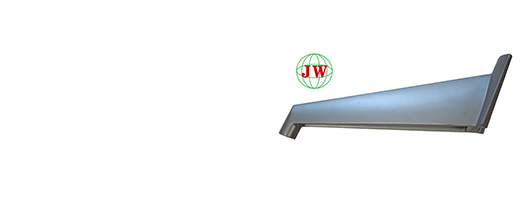
What is the Difference between CNC and Die Casting?
2025-03-11 17:29
In the manufacturing world, two processes stand out for their significance in creating a wide range of products, especially in the automotive, aerospace, and consumer electronics industries: Computer Numerical Control (CNC) machining and die - casting. While both are integral to modern manufacturing, they differ significantly in their processes, capabilities, and applications.
CNC machining is a subtractive manufacturing process. It starts with a solid block of material, which can be metal, plastic, or wood. A computer - controlled machine, equipped with various cutting tools, then removes material layer by layer to create the desired shape. The machine follows precise instructions programmed into its computer system, ensuring high accuracy. For example, in the production of a custom - designed aluminum bracket for an electronic device, the CNC machine uses drills, mills, and lathes to carve out the shape from a solid aluminum block. The process allows for intricate details and tight tolerances, often achieving accuracies within a few thousandths of an inch.
Die - casting, on the other hand, is an additive manufacturing process in a sense. It involves forcing molten metal under high pressure into a pre - made mold cavity Common metals used in die - casting include aluminum, zinc, and magnesium alloys. Once the molten metal fills the mold, it cools and solidifies, taking the shape of the mold. For instance, when producing an engine block for a car, the molten aluminum alloy is injected into a complex mold that has been designed to create the exact shape of the engine block, complete with internal cooling channels and mounting points.
CNC machining can work with a vast range of materials. Metals like steel, aluminum, brass, and titanium are commonly used. Plastics such as ABS, nylon, and polycarbonate are also suitable for CNC machining. Even some softer materials like wood can be processed. However, the hardness and machinability of the material can affect the speed and efficiency of the process. For example, machining hardened steel requires more robust cutting tools and slower speeds compared to machining aluminum.
Die - casting is mainly limited to metals and metal alloys. Aluminum alloys are widely used due to their excellent casting properties, high strength - to - weight ratio, and good corrosion resistance. Zinc alloys are also popular for their low melting point, which makes them easier to cast and for applications where a high - quality surface finish is required. Magnesium alloys, known for their lightweight nature, are used in applications where weight reduction is crucial, such as in the automotive and aerospace industries.
CNC - machined parts are known for their high precision and surface finish. The ability to control the cutting tools with extreme accuracy allows for the creation of complex geometries and tight tolerances. Parts can have sharp edges, smooth surfaces, and intricate internal features. However, the process may leave tool marks on the surface, which can be minimized through finishing operations such as polishing.
Die - cast parts often have a good surface finish right out of the mold. The high - pressure injection of molten metal into the mold cavity results in parts with smooth exteriors. Die - casting can create parts with complex shapes, including thin - walled sections and internal cavities. However, compared to CNC - machined parts, die - cast parts may have slightly less dimensional accuracy, especially in very tight tolerances. But for many applications, the accuracy of die - casting is more than sufficient.
CNC machining is generally a slower process, especially when dealing with large or complex parts. Each pass of the cutting tool takes time, and the removal of material layer by layer can be time - consuming. However, for small - batch production or custom - made parts, the setup time can be relatively short, making it a flexible option.
Die - casting is much faster for high - volume production. Once the mold is set up, large numbers of parts can be produced in a short time. The high - pressure injection and rapid cooling of the molten metal enable quick cycle times. For example, in an automotive parts factory, thousands of die - cast components can be produced in a single day, making it highly efficient for mass - production scenarios.
CNC machining can be costly, especially for large - scale production. The cost of the machine, cutting tools, and the time taken to machine each part contribute to the overall expense. However, for small - batch production or prototypes, the cost can be reasonable as it eliminates the need for expensive molds.
Die - casting has high upfront costs due to the need to create custom molds. These molds can be very expensive, especially for complex part designs. However, for high - volume production, the cost per part decreases significantly as the cost of the mold is spread out over a large number of units.
In conclusion, both CNC machining and die - casting have their unique advantages and are suited to different manufacturing needs. CNC machining excels in precision, flexibility, and small - batch production, while die - casting is ideal for high - volume production of parts with complex shapes using metal alloys. Manufacturers must carefully consider their product requirements, production volume, and cost constraints when choosing between these two essential manufacturing processes
Get the latest price? We'll respond as soon as possible(within 12 hours)












